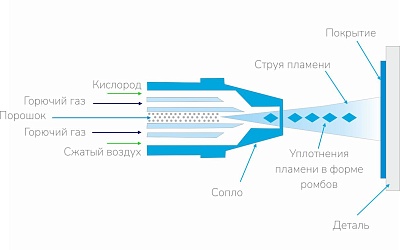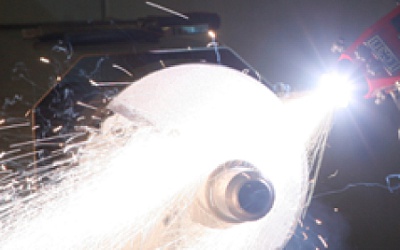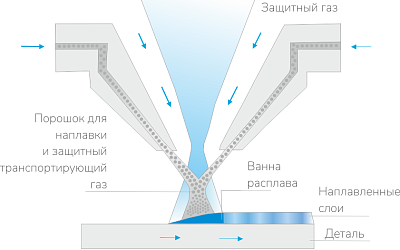
Technologies
Our main purpose is to develop complex solutions in the field of restoration, strengthening of parts and protection against aggressive environments and corrosion.
One of the promising areas for the worn parts restoration and the creation of durable, reliable and competitive products is the use of technologies for gas thermal methods of spraying and surfacing.
Each of the gas thermal spraying and surfacing methods has its own technological features and limitations, which are determined by the peculiarities of the operating conditions, part size and properties, as well as the requirements for the coating to be sprayed.
We are ready to share our experience and will offer the optimal technical solution for your any complexity problems.

High velocity oxygen/air fuel process (HVOF/HVAF)
High-speed flame spraying (HVOF/HVAF) is used to produce hard alloy, metal, composite coatings.
Atmospheric plasma spraying (APS)
Plasma spraying is used to restore and strengthen parts, apply coatings:
- corrosion-resistant,
- abrasive-resistant,
- cavitation-resistant,
- wear-resistant,
- thermal barrier and heat-resistant ceramic materials.
Flame spraying (FS)
Flame spraying technologies are successfully used to repair and restore the geometry of parts that do not experience serious loads. Proposed method allows metallization by anticorrosive coatings, spraying antifriction, wear-resistant, decorative coatings and polymer materials.

Electric arc metallization (ASP)
Arc metallization or arc spray is mainly used to protect against corrosion by applying zinc, aluminum, stainless steel and their alloys coatings, as well as to protect parts from wear, sliding, to restore worn-out surfaces of parts and create a decorative layer by spraying brass, copper, bronze or other materials.

Laser cladding (LC)
Laser surfacing is used to restore worn-out and strengthen new parts that are subject to increased wear, dynamic loads and mechanical effects. The coating is applied by melting the filler material with a laser beam.
